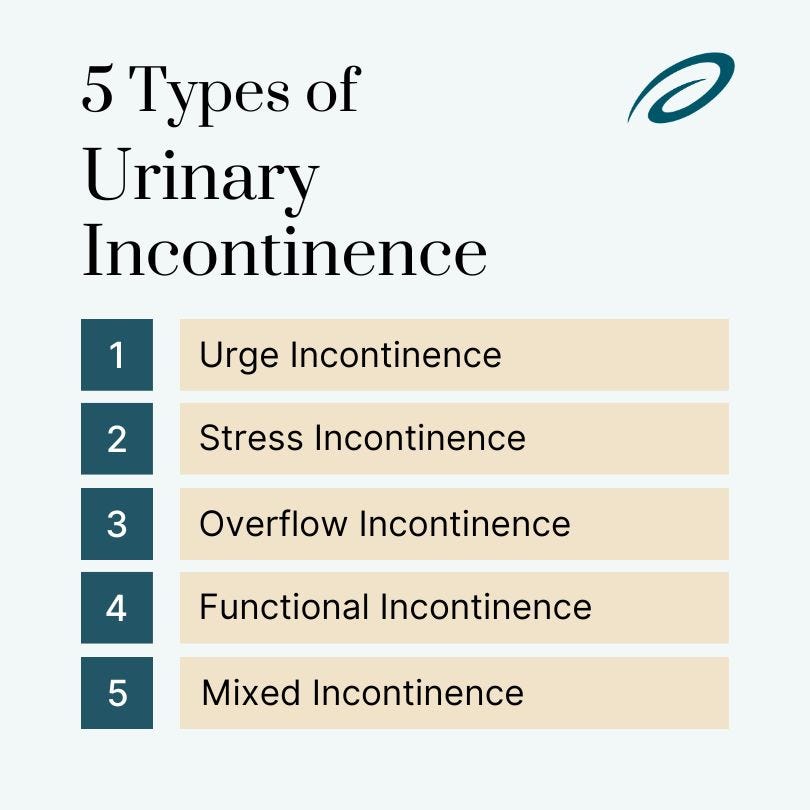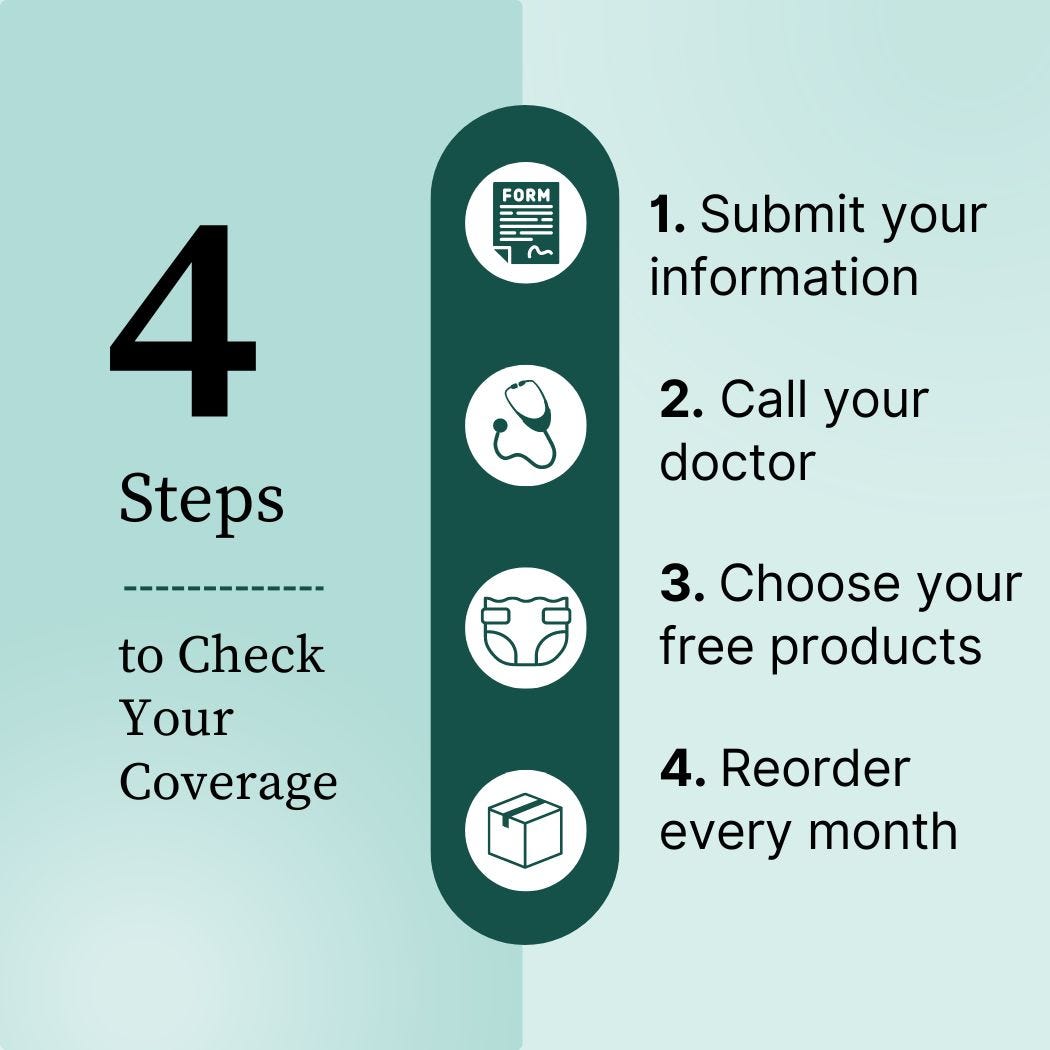Key Takeaways:
- Overflow incontinence is a type of bladder control condition that occurs when the bladder overfills and can't hold the additional volume.
- Enlarged prostate, constipation, and neurogenic bladder are underlying causes of the condition.
- Treatments include intermittent catheterization, medications, surgeries, and pelvic floor therapy.
JUMP TO:
What Is Overflow Incontinence?
What Is the Cause of Overflow Incontinence?
What Are Overflow Incontinence Symptoms?
Who Is at Risk for Overflow Incontinence?
How Is Overflow Incontinence Diagnosed?
What Are the Treatments for Overflow Incontinence?
How to Get Free Bladder Control Supplies for Overflow Incontinence
INCONTINENCE PRODUCTS THROUGH INSURANCE:
Aeroflow Urology is in-network with many Medicaid and Medicaid-managed insurance plans and is accredited by Medicaid. Complete our Eligibility Form, and we’ll automatically check to see if your plan covers incontinence supplies. ***Must meet certain requirements to qualify.***
You will also receive the care and attention every person managing incontinence deserves: A personalized list of 100% insurance-covered incontinence supplies, a dedicated Continence Care Specialist you can contact during business hours, a user-friendly online portal for easy monthly reordering, and educational content.
Get the continence care you need with the dignity you deserve. Join the Aeroflow Urology family today! It only takes 5 minutes to get started.
Overflow incontinence is a challenging bladder control condition that occurs when chronic urinary retention leads to the bladder becoming overfilled, causing leakage.
Whether you're seeking clarity for yourself or a loved one, understanding this condition is the first step towards effective management and improved quality of life.


Check Your Eligibility
2 Easy Steps
Discover the continence care essentials available through your Medicaid plan.
What Is Overflow Incontinence?
Overflow incontinence is a type of bladder control condition that happens when chronic urinary retention occurs. The bladder becomes overfilled, cannot hold the additional volume, and therefore leaks out.
One way to imagine this condition is if you are filling up a glass of water and the glass can only hold so much volume. The faucet doesn't turn off, and the water overflows.
When the signal from your bladder to your brain doesn't communicate, the bladder continues to fill past the overfill point. The bladder cannot stretch to accommodate additional urine volume, which leaks from the weakest point, typically the urethra.
What Is the Cause of Overflow Incontinence?
Underlying causes include:
- Bladder outlet obstruction (enlarged prostate or kink in the urethra, sometimes from a cystocele).
- Constipation
- Neurogenic bladder (loss of sensation and need to void).
- Increased urine volume from diabetes and medications such as diuretics.
What Are Overflow Incontinence Symptoms?
- Leaking of urine or dribbling of urine without awareness.
- Weak urinary stream when attempting to void.
- Frequent urination and nocturia (waking up at night to pee).
- Frequent urinary tract infections (UTIs).
- Abdominal distention and bloating.
- Difficulty with defecation or straining during bowel movements.


Who Is at Risk for Overflow Incontinence?
Certain populations are more prone to developing overflow incontinence. These include:
- Men with enlarged prostates due to a bladder outlet obstruction.
- Women experiencing pelvic organ prolapse (POP).
- Older adults. This occurs because bladder changes lead to decreased detrusor (bladder muscle) tone and a reduced ability to contract and empty the bladder completely.
- Individuals with neurogenic conditions such as Multiple sclerosis (MS), Parkinson's disease, spinal cord injuries (SCI), etc.
- Individuals with diabetes. Overflow incontinence may occur in these individual due to glucose levels in the urine that can lead to detrusor muscle damage.
- People who have had pelvic surgeries and therapy, such as hysterectomy, appendectomy, prostatectomy, or pelvic radiation.
- Individuals with chronic constipation and inflammatory bowel disease (IBD).
Other lifestyle factors that may cause overflow incontinence include dehydration from decreased water intake, sedentary lifestyle, constipation, bladder irritant foods / beverages, increased waist circumference, poor toileting habits, and smoking / nicotine vaping.
How Is Overflow Incontinence Diagnosed?
You'll need to schedule an appointment with your healthcare provider or a specialist, such as a urologist, to be diagnosed with any incontinence.
At your appointment, you have to be given a urinalysis and postvoid residual test. Additional tests your healthcare provider may perform include a cystoscopy, a urodynamics test, or an abdominal / pelvic CT scan. A pelvic floor examination and physical examination can also help diagnose the condition.
What Are the Treatments for Overflow Incontinence?
Most of the lifestyle risk factors mentioned above can be modified to improve bladder function.
However, it's important to note that preventative care should be your focus! Waiting for there to be a problem before addressing it can cause trauma / injury with the potential for limited recovery and function of your urinary system.
Other treatment options include:
- Intermittent catheterization.
- Alpha-blockers for benign prostatic hyperplasia (BPH).
- Cholinergic medications.
- Surgical options to improve BPH and POP.
- Pessary to help with POP.
- Biofeedback or bladder training.
- Fiber / stool softeners.
- Probiotics
- Proper toileting.
- Pelvic floor therapy.
- Management of underlying conditions.
Management of overflow incontinence varies greatly. Everyone is an individual, and everyone's urinary story will be unique. Prevention and early detection of overflow incontinence will lead to the best outcomes. Managing underlying conditions will be essential in preventing progression or limiting the progression.
Disclaimer
Information provided on the Aeroflow Urology blog is not intended as a substitute for medical advice or care from a healthcare professional. Aeroflow recommends consulting your healthcare provider if you are experiencing medical issues relating to incontinence.











